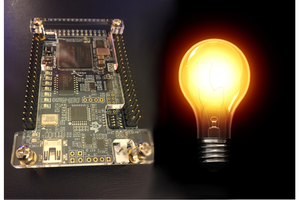Please check the detailed information in the "INSTRUCTIONS" section below.
AMB21/22/23 TensorFlow Lite - Hello World
This project demonstrated how to apply a simple machine learning model trained via Google Tensor Flow, and transfer it to AMB21/22/23 board
 Splendide_Mendax
Splendide_Mendax


 andrew.powell
andrew.powell
 RAMKUMAR R
RAMKUMAR R
